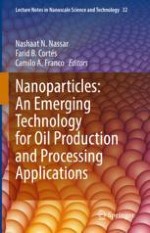2021 | OriginalPaper | Chapter
2. Nanoparticles as Potential Agents for Enhanced Oil Recovery
Authors : Farad Sagala, Afif Hethnawi, George William Kajjumba, Nashaat N. Nassar
Published in: Nanoparticles: An Emerging Technology for Oil Production and Processing Applications
Publisher: Springer International Publishing
Activate our intelligent search to find suitable subject content or patents.
Select sections of text to find matching patents with Artificial Intelligence. powered by
Select sections of text to find additional relevant content using AI-assisted search. powered by
